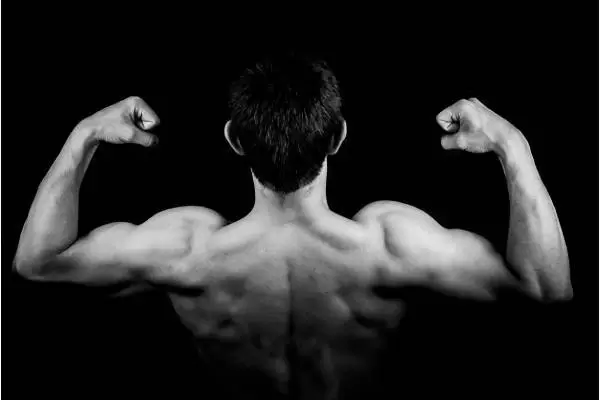
Sometimes, our body becomes a cage for our emotions. This happens to people who tend to bottle up their emotions, who don’t know how to express their worries, and how to react properly.
Why does this happen?
According to the laws of nature, in response to external stimuli, tension arises in some muscle groups which serve to protect you from painful emotional feelings.
And so, time after time, unprocessed emotions continue to leave their mark on the body.
You get used to them and after a while, these areas of tension form a so-called “muscular shell” – protection from the outside world that your body creates.
Everything might seem to be going okay. This body “corset” reliably protects you from negative emotional effects from outside…
But the payback for such protection is too great: there begin to be unpleasant changes in the way the entire body functions, such as:
- Rapid fatigue
- Venous and lymph outflow impairment
- Internal malfunction
- Weight gain (as extra protection)
- Sleep problems
Surprisingly, the armor also works the other way around: it becomes difficult for you to understand and show positive emotions, you lose sensitivity to joyful events, and have a reduced perception of pleasure.
According to the basics of body therapy, the muscular shell consists of seven main zones, which are located in the area of the eyes, neck, chest, abdominal diaphragm, and pelvis.
Self-therapy can be an essential tool for personal growth and self-improvement.
Browse through our courses and see the positive changes they can bring to your life.
You are not sure where to begin?
Each undeveloped emotion adds muscle tension in its “own” area:
- face, eyes, mouth – restrained tears, screams.
- neck – anger, fear, anxiety.
- chest, shoulders, hands – anger, sadness, longing.
- diaphragm – intense anger and irritation
- back and stomach – fear, anger, dislike.
- pelvic area – sexual arousal, jealousy.
Perhaps even right now, you can feel which part of your body is more stressed than others. However, when you give it the order to relax, not much changes.
First of all, it’s not easy to relieve tension that’s been building up for years in just a few minutes. And secondly, the ability to relax your tightened muscles needs to be learned and practiced regularly.
The easiest way to start is to introduce activities into your daily routine that directly affect the tone of your muscles:
- water therapy (herbal baths, underwater showers, saunas, etc.)
- massages (relaxing, using hot stones, self-massage with oils)
- meditation and breathing practices
Special exercises are needed for a more conscious perception of your body and to remove muscle tension. Here are some of them.
- Little Seed
You can do this right after waking up in the morning, lying in bed. Press your knees up to your chest, hugging them with your arms. Put your head on your chest and get closer to your knees. You’ll sort of squeeze into a lump and become a little “seed”. Stay in this position for a minute or two and then begin to slowly “grow”, gradually relaxing the neck muscles, bending your head, relaxing your arms, loosening your hold on your knees, and stretching out your legs. Put your straightened arms behind your head, straighten your legs fully and slowly stretch them out, and feel the pleasant stretch going through your body.
- Ragdoll
This exercise is for alternating between tension and relaxation. While standing, freeze up in a “tin soldier” position: straighten your back as much as possible, keep your chin up, have your hands firmly pressed against the sides of your body, legs pressed against each other, and knees straight. Stay in this position for a couple of minutes to keep the body in high tension, Then, suddenly, turn into a “ragdoll” (it’d probably be best to sit or lie down for this exercise): sharply relax all your muscles, imagine that all your bones have vanished, and be completely helpless. Repeat “Ragdoll” several times.
- Mask of Peace.
The exercise relaxes the facial muscles well and gives a sense of peace and serenity.
It’s best to do this exercise alone. Do several intense facial movements: close your eyes and open them widely, sharply furrow your eyebrows, crinkle your nose up, move your jaw up and stick out your tongue as much as possible. Now we “apply the mask”: close the eyes slowly, directing your gaze to the bridge of your nose. The eyebrows go into a neutral or slightly surprised position; we’ll feel the wrinkles relaxing in the area of the forehead and nose bridge. Slightly open your mouth, letting the tongue lie freely at the root of the upper teeth, soften your jaw, keeping it loose and the teeth separate. In the cheek muscles, feel a pleasant heaviness. Hold this “mask of peace” on your face for a few minutes.
- Tony Stark
This exercise is more focused on preventing muscle tension and helping relieve anxiety before important events.
We begin by standing in the Iron Man creator’s favorite pose: legs spread out, hands wide open to the sides, chest stretched out, and chin proudly raised – the pose of victory, justice and coolness. Stand like this for a couple of minutes, feel your power, splendor and invincibility. Then, put your hands down, shake them a little to relieve tension, and take a few deep breaths in and out. It’s also recommended that you keep that lifted mood. ☺









